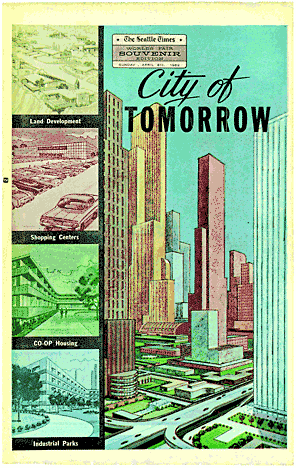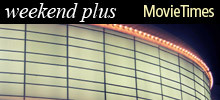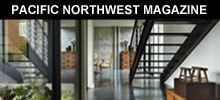Originally published March 17, 2012 at 8:08 PM | Page modified March 17, 2012 at 9:41 PM
1962 Seattle World's Fair: The 'City of Tomorrow' has arrived
It's the 50th anniversary of the Seattle World's Fair, a time when the city was flying high with Space Age optimism. We're marking the occasion by revisiting The Seattle Times' souvenir edition, published shortly before the fair opened April 21, 1962.
Seattle Times staff
1962 SPECIAL SECTION
When the world came to Seattle

On April 21, 1962, the gates opened to a World's Fair in Seattle that left an indelible stamp on the city's image and future.
For 184 days, locals and visitors alike marveled at the Space Needle, the Monorail, the "World of Tomorrow" pavilions, and the "Spacearium."
Days before the opening, The Seattle Times published a 152-page "Seattle World's Fair Souvenir Edition" that was packed with information about the fair as well as predictions for the future. We're celebrating the anniversary by revisiting that section:
![]()
This is the third of a five-part series on the 50th anniversary of the 1962 Seattle World's Fair. The series revisits The Seattle Times' souvenir edition that was published before the fair opened on April 21, 1962.
Here is a World's Fair riddle for you.
When is a prediction of the future of Seattle right on and also way off?
Ding! Time's up. It's when a story is headlined "Downtown optimistic about growth."
It did grow dramatically, but not before it weathered a big downturn that left much of Seattle's downtown, especially the retail core, looking like a ghost town.
In 1962, however, most everything around here was growing up and out, and the vision of downtown was one of towering skyscrapers, wide-open freeways and very few pedestrians.
That was one image of Seattle's future portrayed on the cover of the 20-page "City of Tomorrow" section included in the souvenir edition of The Seattle Times published shortly before the World's Fair opened.
The other images included a suburban industrial park, a suburban shopping center and a suburban neighborhood of new houses.
See a trend here? The suburbs didn't need to feel optimistic about growth. They already were growing and the section was full of stories and advertisements promoting the suburbs and vacation property.
"Lake Hills growth impressive" was the headline on a story about the new Eastside development "that pessimists had described as impossible to accomplish."
An advertisement for Crossroads, another of the planned communities sprouting in the Bellevue area, proclaimed: "Where living is good TODAY ... and even better TOMORROW." The ad for Newport Shores took it one step further: "Our future is here."
And a couple of pages away was "Industry in suburbs" — a story and illustration of a planned industrial park and shopping center (Southcenter) on former farmland that "reflects national trend."
Back in the inner city, officials tried to put a positive spin on decay: "Future bright: Clearance of blighted area is under way."
Right next to that story was one about the "New-type resort city" of Ocean Shores feeding the demand for second homes, considered a logical extension of the modern family's "two automobiles, two bathrooms, two television sets, two sinks and even two outboard motors on the family boat."
The grow-grow 1960s were expected to create a "Huge 'linear' city" stretching from Olympia to Seattle with "more highways, freeways, bridges, possibly monorail spurs, an interurban-railway system and a passenger-helicopter system."
But while downtown Seattle leaders were pumping up its future, many stores and businesses were just a few years removed from moving to the suburbs, or simply closing.
By 1994, much of downtown Seattle was in dire shape, following the trend of many other American cities. And just like in that 1962 illustration, there seemed to be very few people on the sidewalks.
As one worried store owner was quoted in a story in The Seattle Times: "You can't fight the shopping malls."
Downtown's rebirth, however, was just around the corner and that 1962 headline and illustration eventually proved prescient.
Sometimes, the "City of Tomorrow" just takes some time to arrive.
Seattle native Bill Kossen was only 7 years old when The Seattle Times' "City of Tomorrow" special section was published, but he had already seen enough change around here to yearn for a "City of Yesterday." 206-464-2331 or bkossen@seattletimes.com. On Twitter @BillKossen











